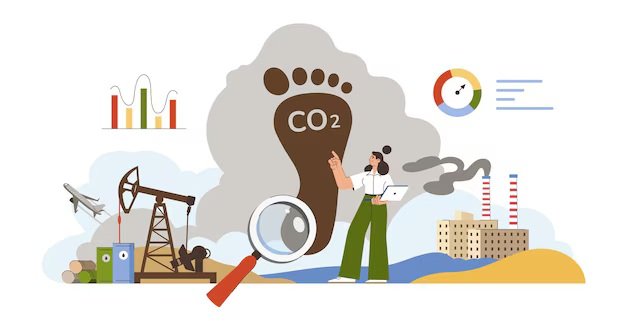How Can You Protect the Environment as a Student
Growing up in the era of climate crisis, biodiversity collapse, and global environmental injustice can feel overwhelming. But as a student, you’re not powerless. In fact, students around the world have proven time and again that their actions can inspire real change. Whether you’re in secondary school or university, your decisions matter.
Protecting the environment isn’t just about activism or grand gestures—it’s also about daily choices, influencing peers, and using your learning spaces as platforms for transformation.

1. Personal Habits That Make a Difference
Eco-Conscious Commuting
Getting to and from campus accounts for a large slice of carbon emissions. For instance, according to a 2024 USC-led study titled Reducing Greenhouse Gas Emissions from Student Commuting, single-occupancy vehicle (SOV) trips by students at USC make up around 7–10% of the school’s total emissions, almost 18,000 tonnes of CO₂ annually. And globally, transportation contributes about a quarter of CO₂ emissions from fuel combustion .
So what can students do? Try walking or biking for shorter distances. A European analysis showed that adding just one bike trip per day and ditching a car ride over 200 days cuts mobility-related emissions by around 0.5 tonnes per person each year . Plus, cycling is linked to better health—47% lower mortality risk and less need for medical treatment compared to non-cyclists. To make this easier, join or lobby for bike-share programs, ask colleges for safe cycling infrastructure, and seek incentives like transit passes or subsidised shuttles. For example, UCLA’s Bruin U‑Pass program led to a real drop in solo car commutes as more students used buses and trains.
If walking or cycling isn’t feasible, carpooling can be a great eco-friendly alternative. Joining school buses or ride-shares helps students spread out their carbon footprint. Many universities now offer discounted public transit for students, significantly reducing driving together.
Energy and Water Use in Dorms
You might overlook it, but energy and water use in dorms is a big deal. Students making small changes can reduce consumption campus-wide. For example, Dickinson College’s “Student Switch Off” campaign cut dorm electricity use by over 10% per year. This was a student-led initiative that helped raise awareness and encouraged turning off unused lights.
Here’s a practical dorm checklist:
- Unplug items like chargers, laptops, and gaming consoles when you’re not using them—these devices still consume electricity even when they’re turned off, but are left plugged in.
- Switch to LED bulbs and make the most of natural daylight.
- Open blinds/windows instead of cranking heating or cooling—sleep cosy, and adjust thermostat a few degrees lower in winter or higher in summer .
- Don’t leak water—fix dripping taps and monitor how long your showers run. At a Romanian university, shorter showers and laundry campaigns nudged students to conserve water .
2. Reducing Waste and Choosing Sustainable Products
Rethink, Reduce, Reuse, Recycle
Did you know the average student tosses out more than 640 pounds of solid waste each year? That’s almost the weight of four grown adults combined—and much of it isn’t necessary! According to the U.S. EPA’s data, a huge chunk of this waste could be prevented.
Here’s how you can make a real difference:
- Go digital: Swap physical textbooks, notebooks, and printed handouts for e-books, digital notes, and cloud storage. This eliminates paper waste before it even starts.
- Pack sustainably: Use reusable lunch bags, stainless-steel water bottles, and durable food containers. Ditch the single-use plastic cutlery and sandwich bags.
- Sort it right: At home, dorm, or campus, set up simple bins—paper, plastic, food scraps. Compost your fruit peels, coffee grounds, and veggie leftovers.
- Recycle correctly: Check local recycling rules and make sure you rinse containers and flatten cardboard. A little effort at sorting saves so much later.
It’s not just talk—universities that actively encourage recycling, composting, and sustainable purchasing can dramatically cut their waste footprints. And you don’t need to be a green warrior to help: start by swapping one disposable item for a reusable version today.
Say No to Fast Fashion
Fast fashion might seem fun and affordable, but behind cheap prices lies a heavy environmental cost. The fashion industry creates roughly 10% of global carbon emissions and accounts for 20% of wastewater worldwide unece.org+15mdpi.com+15instyle com+15.
Here’s what you can do to resist the trend:
- Buy secondhand: Thrift stores, consignment shops, and online resale platforms let you find stylish clothes at a fraction of new retail cost—and with far less environmental impact.
- Organise campus clothes swaps: Invite friends to trade items you no longer wear. Quick, fun, community-driven—and no new items purchased.
- Learn repair skills: A simple stitch, button-sewing, or patching can extend the life of clothes significantly. You’ll save money and reduce waste.
Research shows that most discarded clothing ends up in landfills or is burned, contributing to greenhouse gases and pollution. By choosing secondhand items, repairing what you already own, and reusing with pride, you shrink your own fashion footprint dramatically.
3. Campus and Community Engagement
Join or Start an Environmental Group
Joining or launching an eco‑club can be one of the most impactful ways for students to influence their campus’s green direction. Most universities—and even many secondary schools—have groups like green societies or climate-justice teams that welcome new members.
Across Africa, for instance, Ghana’s Green Africa Youth Organisation has established campus eco-clubs at several universities, inspiring student-led plastic-reduction campaigns and compost projects. At the University of Florida in the U.S., the student senate made history in 2024 by unanimously passing a “Green New Deal” resolution—the first public university to do so through student government. According to The Guardian, the resolution mandates full divestment from fossil fuels, elimination of fossil fuel research funding, and a transition of campus operations toward just, renewable-energy-based practices. It now awaits final approval by the Board of Trustees. These student-led efforts show how organised campus communities can drive meaningful policy reform locally and beyond.
Organise or Support Eco Events
Organising a campus clean-up, recycling drive, or Earth Day event doesn’t just help the environment—it builds a sense of shared community. At Monash University Malaysia, the student-led “Taste the Change” initiative was launched in August 2024 to eliminate single-use plastic packaging, cutlery, and straws from campus dining. They introduced biodegradable alternatives—including compostable utensils and self-destructing straws—that decompose completely within two years if not recycled, spotlighting a scalable, eco-friendly dining model for the region.
On a larger scale, “FoodWise”—a campaign at Hong Kong University of Science and Technology—used data dashboards and gamification during a two-week campus food‑waste drive involving 200+ participants, which significantly boosted awareness and changed behaviour. These shared experiences help ideas take root long after the event ends.
Advocate for Greener Policies
Students have real power to shape institutional decisions. You can campaign for simple but effective changes, like adding compost bins, installing solar panels, or urging your school to divest from fossil fuels. In 2024, the University of Texas at Austin funded a pizza‑box composting pilot, approved in response to student demand for more composting options. Meanwhile, the “Re:wild Your Campus” initiative, now active at 15 universities, encourages student-driven elimination of synthetic pesticides in favour of healthier, organic landscaping.
4. Academic and Career Influence
Choose Green Coursework
You don’t need to be an environmental science major to make a green impact. Many universities now offer sustainability-focused electives, and some even require them. For instance, a report by Time.com suggested that Arizona State University mandates every incoming student—across all disciplines—to take a sustainability course. Similarly, UC San Diego began requiring climate-change content in graduation‑level courses for around 7,000 students starting with the class of 2028.
If you have the freedom to choose electives, look for ones that blend your main field with ecological themes. Engineering classes might teach design thinking for eco‑friendly products; business programs increasingly include environmental‑impact case studies. You’ll gain critical insights and show employers you care about sustainability.
Green Your Research
Whether you’re working on lab experiments, dissertations, or class projects, ask: how does this affect the planet? For example, a chemistry project could compare biodegradable alternatives to petroleum-based plastics. Or a social science thesis might investigate local community recycling habits. At the University of Leuven, a “Science and Sustainability” course helped master’s students create research directly tied to environmental action. By intentionally considering environmental impact, you make your work more meaningful—and more likely to gain attention and funding.
Career Path with Purpose
A growing range of green careers is emerging—everything from renewable‑energy engineering and environmental law to sustainability analytics and green software design. The World Economic Forum’s Future of Jobs Report 2025 identifies renewable energy engineers, environmental specialists, and sustainability professionals as among the fastest‑growing. In the US alone, jobs like solar photovoltaic installers and wind-turbine technicians are projected to grow 48 % and 60 % respectively, from 2023 to 2033.
Meanwhile, green-tech positions—such as sustainable cloud architects and climate data analysts—are experiencing explosive demand, especially as industries strive to meet net-zero goals. Choosing a sustainability-aligned career means you’re stepping into sectors that’re not only expanding rapidly but also genuinely making a positive impact.
5. Digital and Social Influence
Share Smartly
Using TikTok, Instagram, or even a campus blog, you can turn everyday moments into powerful green messages. Create short, upbeat videos showing how to reduce waste or save energy. Highlight myth-busting clips that debunk common eco-misconceptions. Recent research shows people following eco‑influencers on platforms like TikTok and Instagram are 75% more likely to adopt eco-friendly habits after seeing such content, according to Unilever research. On your campus blog, share practical tips—like how dorms can cut down on single-use plastics—alongside inviting stories from peers who’ve successfully made these changes.
Combat Misinformation
It’s all too easy for misleading claims about climate to spread fast. The UN notes that false climate narratives and cherry‑picked data, often amplified by social media, are undermining trust. According to recent IPCC advice, we should be sharing links to UN Environment Programme, IPCC reports, and National Geographic Education—paraphrased in our own words rather than copying—to steer followers toward solid scientific consensus . If you see someone quoting a false figure, gently correct it with facts, such as: “Actually, IPCC data from 2023 shows emission levels continue to rise globally.” Speaking up helps pre‑empt the so‑called “spiral of silence,” where people stay quiet because they think others don’t care.
Celebrate Wins
Constantly talking about doom can feel overwhelming for both you and your audience. Instead, shine a spotlight on positive developments, like the rise in renewable energy use, plastic bans in various countries, or a university transitioning to solar power. For example, mention that in 2024, over 125 countries reported higher public support for climate action—a reminder that positive trends exist. Sharing these stories isn’t fluff—it builds hope and community. When people see real progress, they’re more likely to believe change is possible and join in.
6. Emotional Resilience and Community
Eco‑Anxiety Is Real
Climate worries aren’t just in your head—they’re real and widespread. Many students today struggle with anxiety over our planet’s future. A major global survey by The Lancet in 2021 found that 59% of young people felt “very” or “extremely” worried about climate change, with nearly half saying it interfered with their daily life, and three‑quarters admitting “the future feels frightening.” In the U.S., 63% of young adults reported eco‑anxiety that causes real emotional stress.
That genuine emotional weight can show up as sleeplessness, trouble concentrating, sadness, or even physical symptoms. But acknowledging those feelings is the first step, because worry often signals that you care deeply.
Advice for coping:
- Focus on what you control. Break climate action into small, manageable steps—like reducing waste, biking, or planting native flowers. These aren’t just gestures; they build momentum and meaning.
- Have a Green Self‑Care Routine. Spend time in nature, keep a journal of hopes and fears, or simply reflect during walks. Experts suggest mixing eco‑awareness with soothing daily rituals to prevent burnout.
- Share your feelings. Eco‑anxiety thrives in silence. Talking with caring peers allows emotional release and reminds you, “I’m not alone.”
Build a Green Tribe
Humans are social creatures, and that counts for climate action too. Studies show that being part of a climate‑focused group offers real emotional strength: shared purpose, peer support, and reminders that you’re not powerless.
How to get started:
- Create a study or action circle. A few friends meeting weekly to swap ideas, plan simple projects, or discuss climate readings can work wonders. Participants of “All‑We‑Can‑Save” or similar circles report greater motivation, more action, and reduced anxiety.
- Go local or digital. Online forums, school clubs, or neighbourhood initiatives make forming a “green tribe” doable, even in places with fewer in‑person groups.
- Invite diversity. Including people of different backgrounds and experiences enriches conversation and brings fresh viewpoints, especially important in climate communities
Learn More: 10 Eco-Friendly Projects for Students
Conclusion: Everyday Actions, Global Impact
Being a student is a powerful time to build habits that will last a lifetime. Your lifestyle, learning, and leadership can all contribute to a healthier planet.
Final Action List:
- Walk, cycle, or take public transport
- Use less water and electricity
- Refuse single-use plastics
- Eat sustainably
- Join a green student group
- Push for policy changes
- Share knowledge and uplift others







